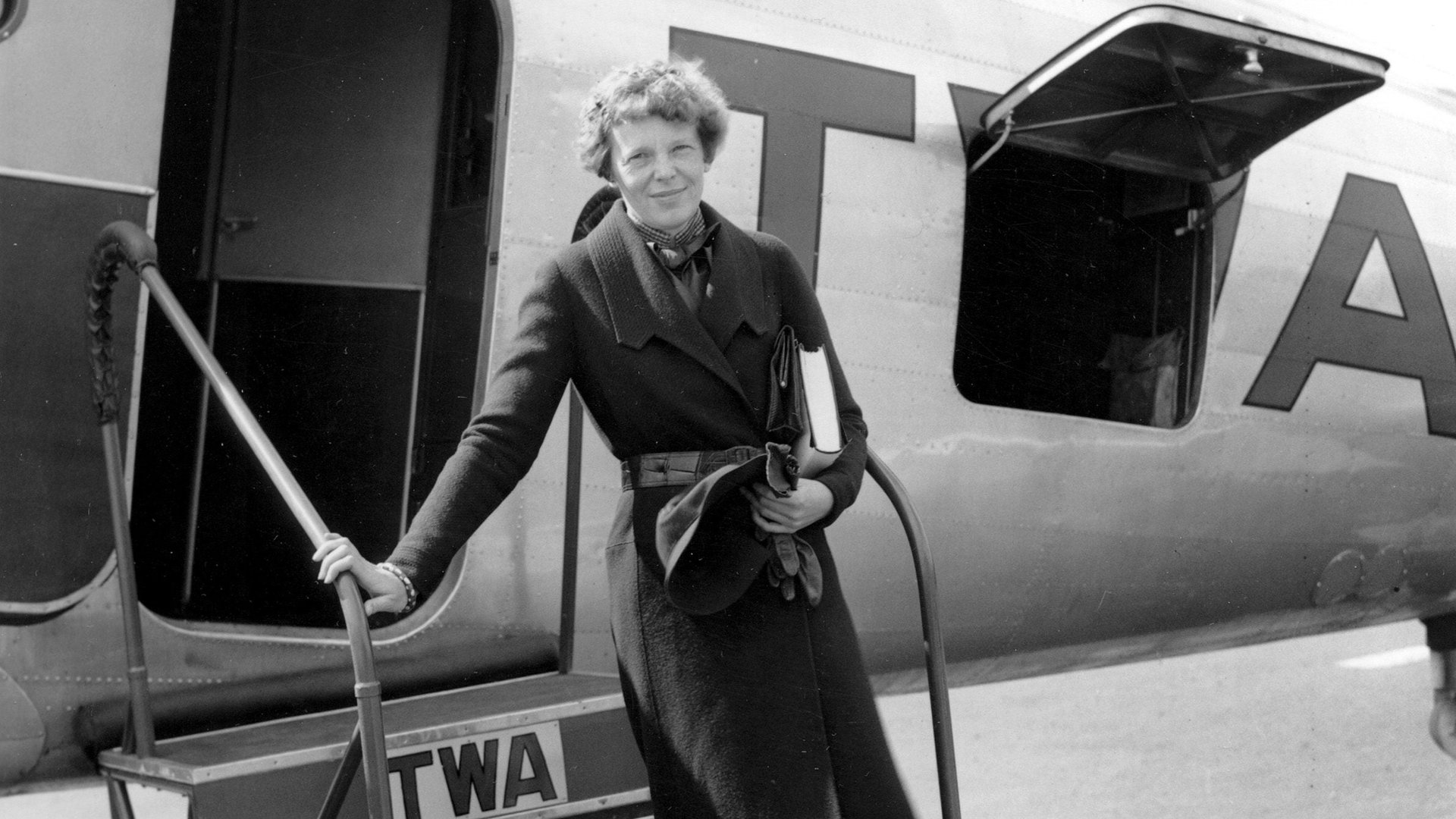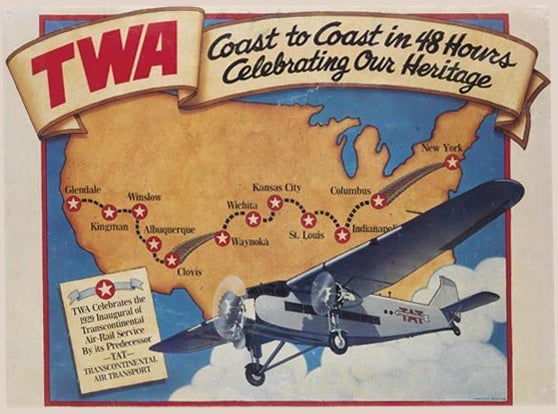The fastest route across the US once took two days and 10 layovers
Fretting over holiday flight delays? Consider this: Traveling across the United States once took two days, nine flights, two trains, and double-digit stopovers.


Fretting over holiday flight delays? Consider this: Traveling across the United States once took two days, nine flights, two trains, and double-digit stopovers.
Transcontinental Air Transport (TAT)—renamed Trans World Airlines (TWA) when it merged with Western Air Express in 1930—was the first US passenger airline to offer an itinerary connecting the east and the west coasts. But it was no quick journey: The trip started on a train from New York City’s Grand Central terminal and, after 48 hours of transfers and layovers, ended at an airport in Los Angeles. The full itinerary looked like this:
- New York City to Columbus, Ohio (train)
- Columbus to Indianapolis, Indiana (plane)
- Indianapolis, to St. Louis, Missouri (plane)
- St. Louis to Kansas City, Missouri (plane) (overnight)
- Kansas City to Wichita, Kansas (plane)
- Wichita to Waynoka, Oklahoma (plane)
- Waynoka to Clovis, New Mexico (train)
- Clovis to Albuquerque, New Mexico (plane)
- Albuquerque to Winslow, Arizona (plane)
- Winslow to Kingman, Arizona (plane)
- Kingman to Glendale, CA (plane)

America’s most famous aviator, Charles Lindbergh, helped choose the route, which took passengers through a circuit of small towns. At the time, it was considered incredibly efficient—crossing the country by rail took four days.
“Travel by train and airplane from California to the east or from east to California is the modern achievement in transportation,” Pennsylvania Railway president Gen. William Wallace Atterbury said in a 1929 address. “To save time, to see America first, and to enjoy the real fun of flying, I recommend it to you.”
In promoting the journey, TWA glossed over its many dangers and discomforts. For one, a 1930s TWA airplane was far from the “snug and comfortable private yacht” the company advertised. Early flights were considered so hazardous that flight attendants were required to be registered nurses, and the in-flight entertainment involved staring at US souvenir map denoting landmarks one might glimpse through the plane’s small windows.
“I flew [from New York] to Hawaii for my honeymoon and back,” a TWA old-timer recalled at the Dec. 15 groundbreaking ceremony for a new TWA-themed hotel at New York’s JFK airport. “Then the only form of entertainment was watching the propellers spin. [My wife] kept on asking, ‘Are we there yet?'”

Cross-country travelers had to endure layovers until 1953, when the first regular direct flight service from New York to California debuted—the TWA’s 8-hour Super Constellation route. It would take 23 more years, and the invention of better jetliners, for coast-to-coast travel time to shrink to the five hours we know today.
In a nod to its history, one of the original Lindbergh transcontinental planes will be on display at the TWA Hotel when it opens in 2018. Laughed another former TWA employee at the Dec. 15 event, ”I still have that shirt that says ‘Coast to Coast in 48 Hours.'”